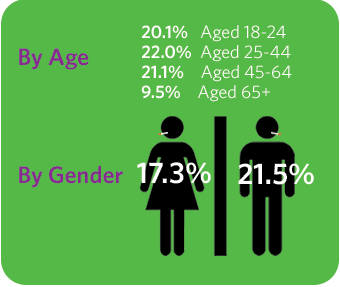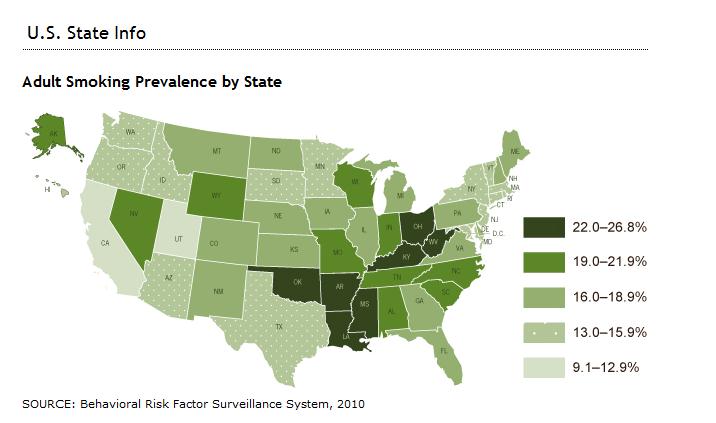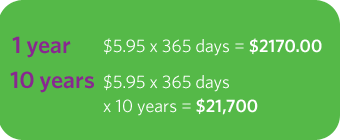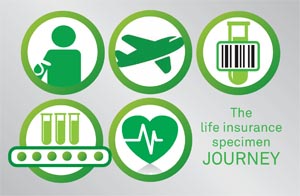In our first blog article, we defined what cotinine is, how it is related to smoking and explained some of the myths insurance agents might hear from their applicants in regards to their smoking status. This week, we would like to share with you some staggering statistics on smoking and tobacco use in the United States.
Smoking Statistics
According to the Centers for Disease Control and Prevention, nearly one in five people in the United States are classified as smokers. That is roughly 45.3 million people! Let’s see how that breaks out by gender and age group:

If you look at the ratio of smoking by state, you can see that the dark green states house the largest percentage of smokers in the country.

What Does Smoking Cost?
We all know that smoking can cost a person their life, but what are the monetary costs that come along with smoking? Let’s do a little math and see what we come up with. If the national average cost of a pack of cigarettes is $5.95 and you smoke one pack per day, what does that add up to in a year? What about 10 years?

If you smoke for 10 years, you will have spent over $20,000 on cigarettes alone!
The price of cigarettes is not the only monetary cost you incur when you smoke. People rated as smokers generally pay more for healthcare due to the increased risk of medical problems. They pay more for auto and home insurance because the risks of smoking related accidents are higher. And according to Jeff Rose’s article on Good Financial Cents, because of the increased risk of early death due to smoking people are paying two to four times as much on their life insurance premiums as non-smokers!
The good news is that if you choose to stop smoking, you can have your life insurance exam completed again to prove you are a non-smoker; however, most insurance companies require you to be smoke free for one year before completing the repeat exams.
When discussing nicotine use with your applicants, share with them what you have learned. They may not see the big picture and all risks associated with using tobacco. We will discuss tips and resources you can provide to your applicants to help them kick the habit in our next blog.




















In our first blog article, we defined what cotinine is, how it is related to smoking and explained some of the myths insurance agents might hear from their applicants in regards to their smoking status. This week, we would like to share with you some staggering statistics on smoking and tobacco use in the United States.
Smoking Statistics
According to the Centers for Disease Control and Prevention, nearly one in five people in the United States are classified as smokers. That is roughly 45.3 million people! Let’s see how that breaks out by gender and age group:
If you look at the ratio of smoking by state, you can see that the dark green states house the largest percentage of smokers in the country.
What Does Smoking Cost?
We all know that smoking can cost a person their life, but what are the monetary costs that come along with smoking? Let’s do a little math and see what we come up with. If the national average cost of a pack of cigarettes is $5.95 and you smoke one pack per day, what does that add up to in a year? What about 10 years?
If you smoke for 10 years, you will have spent over $20,000 on cigarettes alone!
The price of cigarettes is not the only monetary cost you incur when you smoke. People rated as smokers generally pay more for healthcare due to the increased risk of medical problems. They pay more for auto and home insurance because the risks of smoking related accidents are higher. And according to Jeff Rose’s article on Good Financial Cents, because of the increased risk of early death due to smoking people are paying two to four times as much on their life insurance premiums as non-smokers!
The good news is that if you choose to stop smoking, you can have your life insurance exam completed again to prove you are a non-smoker; however, most insurance companies require you to be smoke free for one year before completing the repeat exams.
When discussing nicotine use with your applicants, share with them what you have learned. They may not see the big picture and all risks associated with using tobacco. We will discuss tips and resources you can provide to your applicants to help them kick the habit in our next blog.